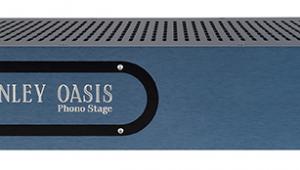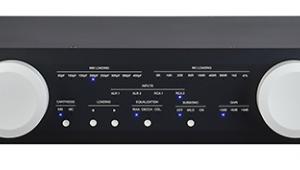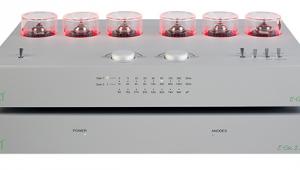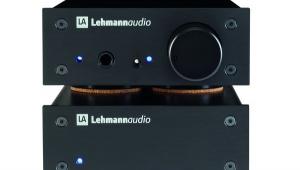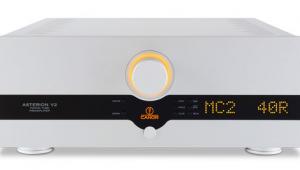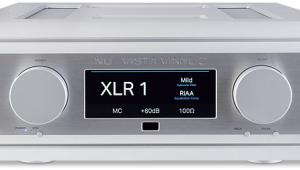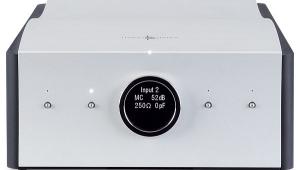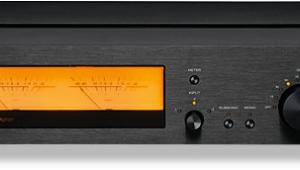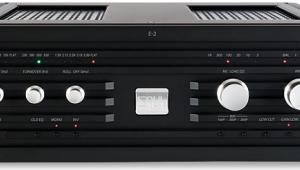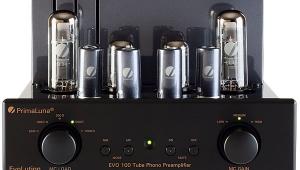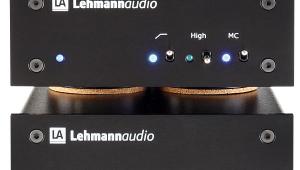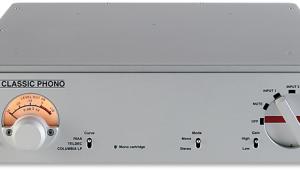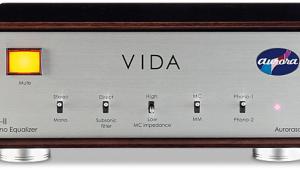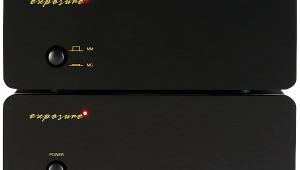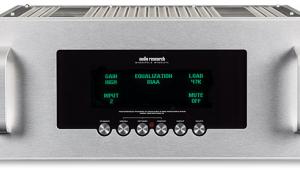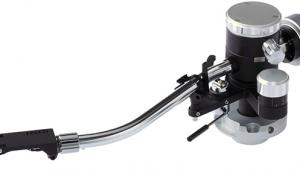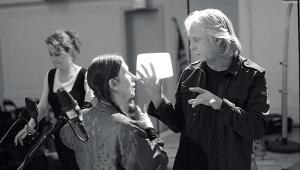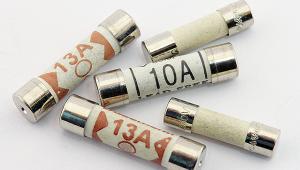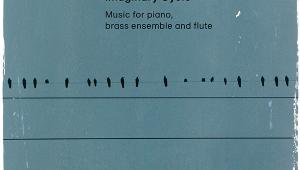Audia Flight Phono (£3500)
It’s been almost two years since Hi-Fi News had the pleasure of auditioning a CD player and integrated amplifier from the Italian Audia company [see HFN September 2007]. With just a select range of amplifiers and a couple of CD players in its product portfolio, Audia may barely register as a blip on the radar of British audiophiles. On the European specialist audio scene, on the other hand, Audia has carved out a name for itself as a manufacturer to be taken most seriously in the high-end arena, its products regularly garnering accolades in French and German magazines as well as on its home turf in Italy, naturally.
Talking of carving out a name, you just know that Audia’s products aren’t going to come without a fairly substantial price ticket attached to them when you see the build quality. Each component’s front panel is carved out of a solid billet of aluminium, with a high grade brushed finish that simply exudes understated ‘class’. The company’s new phono amplifier – called Flight Phono – is no exception. It’s been a long time coming, Audia having first previewed it at Munich’s High End show in 2008.
LOOKING THE BUSINESS
The Flight Phono is a two box design with its power supply housed in a separate chassis, connecting to the main unit via a 25-pin male D-SUB connector that terminates a heavy screened cable captive to the main unit. While the wrap around metal casework of both the power supply and main unit are in fact a little utilitarian on close inspection and not particularly well damped, the Nextel-type paint finish is exemplary and the whole is an object lesson in elegant industrial design. Attention to detail is evident in the machined aluminium feet ‘isolators’ that incorporate compliant rubber dampers and the luxurious, cost-no-object RCA phono sockets with gold plating. In short, it looks the business.
On powering up, an illuminated Audia winged insignia cut out of the Flight Phono’s fascia flashes for a minute until the unit is ready to ‘go’. Both single-ended (RCA) and balanced (XLR) outputs are provided, and there are two inputs that can be selected via a button on the front panel. On our sample the two inputs were for moving magnet and moving coil cartridges, however the Phono can be ordered with two MM or two MC inputs if so desired. As the MM and MC input stages employ totally separate input boards, your Flight Phono can always be reconfigured by your dealer at a later date.
A removable plate on the rear panel reveals rows of input pin sockets into which supplied gold-plated jumpers are inserted to achieve a required input loading for precise cartridge matching. For the MC input the maximum resistive load (with no jumpers inserted) is 47kohm, while inserting/not inserting jumpers into the various rows of sockets as determined provides for a choice of ten settings – from 7ohm to 980ohm. Custom settings can also be achieved by inserting a 0.25W resistor into the first row of pin sockets.
Similarly the capacitive load can be configured for MM cartridges. Using the provided jumpers a choice of twelve settings are available between 47 and 600pF, while custom settings can be achieved by removing all the jumpers and inserting a capacitor of a specific value in the first row of pin sockets. Needles to say if an ‘ideal’ value is not available by simply inserting the jumpers as required, your dealer will assist to enable nominally ‘perfect’ matching with your chosen cartridge.
To insert the jumpers you should do this carefully using long nosed pliers. Don’t do as I did: as I’ve small fingers I thought I’d get away with using my hands, but accidentally let a jumper slip from my fingertips. No big deal, you might think, but there’s a gap between the casework and the internal circuit board which allowed the jumper to fall inside the unit. Urgh... the air was blue in the Bamford listening room, as I had to do something that is ill-advised for regular users and disassemble the entire case in order to fish out the lost jumper that was now rattling around inside. You have been warned!
In addition to switching between the Phono’s two inputs, push buttons on the fascia provide for selection of IEC equalisation (20Hz filter), summing of the left and right channels for good reproduction of mono records when using a stereo cartridge (as most of us do!), and a +10dB gain switch.
Returning to the separate power supply unit for a minute, at the rear there’s an RJ45 socket for connecting a ‘communication’ Ethernet cable. Moving an adjacent toggle switch from Master to Slave consequently allows the Phono to be automatically powered on/off by one of Audio Flight’s amplifiers. The power unit houses two independent transformers in fact, a 50VA toroid powering the Phono’s analogue audio stages and a 15VA toroid providing a separate supply for the relays, logic control and memory. Switching commands from the fascia’s push buttons are via opto-isolators.
Common to the design philosophy employed in Audia’s Flight amplifier range, the Phono’s MC input preamplifier is a current feedback design (while the MM employs a differential transistor input stage), after which RIAA/IEC equalisation is achieved entirely passively using high grade components such as 1% polypropylene and polystyrene capacitors. A second gain output stage, dubbed MCF NG1, employs Audia’s latest current feedback design ideas to ‘further reduce the noise floor and improve transient speed’ – which the company claims is the result of over two years’ development work.
PLAYING CATCH
From the moment the stylus cleared the run-in groove it was evident that this is a fabulous phono amplifier, with exceptionally low noise and a powerful, confident demeanour. I had to leap for the volume control of my Harman Kardon HK990 amplifier, as the uncommonly low noise from the record’s lead-in groove fooled me into thinking my system was set at a low-ish volume level. Actually it was – but the high gain of this Audia is such that I wasn’t far from catching my speakers’ drivers in my lap. And that would have been costly.
Spending time with Audia’s Flight Phono soon had me rediscovering forgotten gems buried within my record collection. Prefab Sprout’s Swoon album [Kitchenware, KWLP1] for example, the band’s debut LP from 1984, sounded so fresh it might have been recorded only yesterday. The opening track of side two, ‘Couldn’t Bear to be Special’, with its layers of enchanting, breathy vocals and complex textures sounded magnificently holographic courtesy of the Flight Phono, with Paddy McAloon’s voice literally leaping out of the soundstage in a manner that was frankly startling.
WINDING BACK THE CLOCK
Was it simply that the last time I listened intently to Swoon I was in an attic apartment, nearfield monitoring through Yamaha NS1000Ms driven by Crimson monoblocks? I thought this system was quite splendid at the time, but, well, that was a quarter of a century ago...
Listening again to the opening couple of minutes of ‘Couldn’t Bear to be Special’, this time through the Edwards Audio MC1 phono amplifier, a great-sounding little phono stage priced £250 [see HFN July ’07] reinforced that this Audia Flight is truly, er, special. While one can happily revel in the polished sound of this recording through the clear and open-sounding Edwards’ MC1, with the Audio Flight the performance gains what I can only describe as majestic scale, authority and ‘sumptuous realism’. I consider the little Edwards’ MC1 a bargain for £250, a great example of ‘budget esoterica’. But what you gain by spending the equivalent of fourteen MC1s (a sobering thought, I’m bound to accede) is a smooth, luscious, creamy quality that takes all the ‘edge’ away – yet manages this without losing any sparkle and brilliance in treble details.
ROSY CHEEKS
Another trip down memory lane included a session enjoying Kate Bush’s Never for Ever LP [EMI, EMA 794]. Mine’s a slightly noisy pressing I’m sorry to say, nevertheless the Flight Phono sounds so effortlessly powerful and vibrant that surface noise all but vanishes beneath the energy of the music. As I wallowed in the lush tapestry that makes up the sound of Kate Bush’s ‘Babooshka’ the listening experience was so intimate I might have blushed had anyone entered the room.
Late one evening, during yet another prolongued ‘LP fest’ thanks to the addictive realism I was enjoying, members of my family were heard to yell, ‘What on earth’s that?’ as the thunderous cacophony of Edgar Varese’s ‘Arcana’ and ‘Ionisation’ orchestral works (scored for 39 percussion instruments!) resonated through the building.
Regarded by many as a ‘reference’ recording of the Los Angeles Philharmonic and LA Percussion Ensemble under Zubin Mehta [Decca SXL 6550], Edgar Varese’s hallucinogenic, roller coaster compositions on this LP, with its staccato blocks of explosive percussion, had me listening at a ‘realistic’ sound pressure level, shall we say. And it was a little late.
LUXURY CRUISER
I take no blame for disturbing a slumbering household whatsoever. It was all the fault of the Flight Phono. You see, when you’re doing 70mph in a Lotus 7 single seater sportscar you know you’re travelling quickly. But when you’re doing the same speed in a luxurious Bentley you feel as if you could walk faster. And the sound of the Flight Phono, no matter what music you feed it, is nothing short of luxurious.
The Flight Phono arrived last month when I was auditioning five MC cartridges in the £230-£270 price range and I was ‘wowed’ by the sound they produced through this phono preamplifier. Given that very high-end cartridges are necessarily expensive to run (it will inevitably need re-tipping), one might be better advised to buy a modestly priced moving-coil and a top-flight phono stage like the Flight instead.
VERDICT
Sound quality from Audia’s Flight Phono is in the super league, capable of bringing out the very best from whatever cartridge you have residing in your turntable’s tonearm. Thanks to its fabulously low noise floor and subjectively huge dynamic range it will have you reappraising your record collection late into the night, time and again. Price is up there in the super league too, but if it’s the very best you’re seeking...
Originally published in the August 2009 issue


